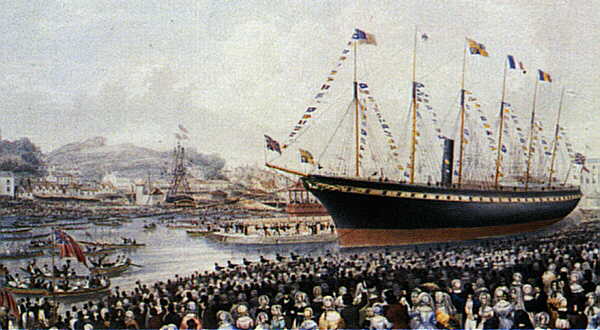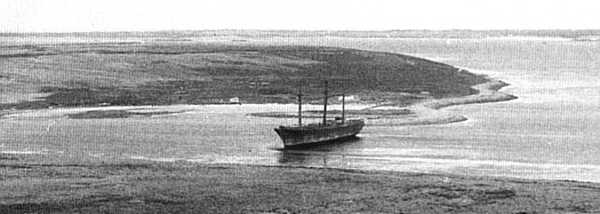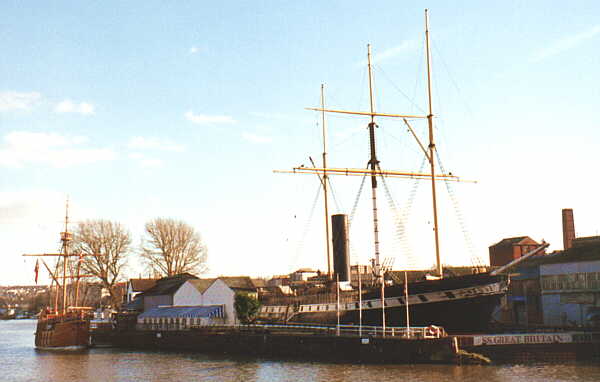

HomePage | Optical Illusions | War Stories | QBasic | Dads Navy Days | Bristol | Bristol, USA | Bristol, Canada | Terre Haute | Miscellany | Web Stuff | About Ray | Site Map | Site Search | Messages | Credits | Links | Web Rings
Bristol | Place Names | Legends, Pre-history and the Romans | Birth of the City | 1100 Onwards | Voyages | 1450 Onwards | 1650 Onwards | 1700 Onwards | Riots | The Blitz (Page 1), (Page 2) | The Castle (Page 1), (Page 2), (Page 3), (Page 4), (Page 5), (Page 6) | Blaise Castle (Page 1), (Page 2) | Castle Green (Page 1), (Page 2) | Union Street | Broadmead | The Old City (Page 1), (Page 2), (Page 3), (Page 4) | Christmas Steps (Page 1), (Page 2) | St. Mary Redcliffe (Page 1), (Page 2), (Page 3) | College Green (Page 1), (Page 2) | King Street (Page 1), (Page 2) | Clifton (Page 1), (Page 2) | Avon Gorge (Page 1), (Page 2), (Page 3) | Hotwells (Page 1), (Page 2) | City Docks (Page 1), (Page 2), (Page 3) | Bedminster (Page 1), (Page 2), (Page 3), (Page 4), (Page 5), (Page 6), (Page 7) | Old Market (Page 1), (Page 2) | St. George (Page 1), (Page 2) | Temple (Page 1), (Page 2), (Page 3) | Arno's Vale Cemetery (Page 1), (Page 2) | Brislington | @ Bristol | Oldest House | I. K. Brunel (Page 1), (Page 2) | Ma Pugsley | Yeamans | Boundaries (Page 1), (Page 2) | Photography | Exhibition (Page 1), (Page 2) | Lead Working | Historical Perspective | Virtute et Industrial | Other Sites | Bibliography (Page 1), (Page 2) | Help Wanted (Page 1), (Page 2), (Page 3)
Bristol - Isambard Kingdom Brunel (1806 - 1859)
Great Western
While building the GWR, Brunel designed and built the Great Western. This was a wooden paddle steamer and was built at the Patterson & Mercer yard in Bristol. She was first launched on 19th July 1837 and sailed to London for fitting. The ship left for America on 8th April 1838 and she arrived in New York on 23rd April. She did in just 15 days what a sailship would take a month to do and ushered in the age of passenger carrying liners. In 1842 her home terminal ports alternated between Bristol and Liverpool, but from 1843 until her last trans-atlantic voyage in 1846 she used Liverpool exclusively. She had made 45 trans-atlantic voyages for The Great Western Steamship Company, when she was sold to the Royal Mail Steam Packet Company. The money raised by the sale was used to help salvage The Great Western from Dundrum Bay, Ireland. Working for this company she sailed to the West Indies and South America. During the Crimea War against Russia she served as a troop ship and was finally scrapped in August 1856 at Castles' yard at Vauxhall on the Thames. Altogether the Great Western made 67 Atlantic crossings in 8 years and earned the Blue Riband.
Great Britain
As soon as the Great Western entered service people realised this was the way that sea travel would develop and Brunel designed the first ocean going, propellor driven ship in history - the Great Britain. Work started on her on 19th July 1839 and was launched four years later in July 1843. She was so wide that teams of men had to stand on the wharves and push against her to stop her scraping the walls, she was also wider than the locks at the entrance to the Floating Harbour and part of the lock walls had to be demolished for her to get through them.

Launch of the Great Britain
She must have been too much of a novelty as only 50 passengers made the crossing to New York on her maiden voyage. Her early voyages were beset with problems, especially with her engines and she was runaground several times. Three years after he launch disaster struck and she ran aground at Dundrum Bay, Ireland in September 1846. Brunel arrived in December and wrote "I was grieved to see this fine ship lying unprotected, deserted and abandoned by those who ought to know her value ... the finest ship in the world, in excellent condition, such that four or five thousand pounds would repair all damage done, has been left and is lying like a useless saucepan kicking about on the most exposed shore that you can imagine."
The Great Britain was finally towed free for repairs in August 1847. An interesting fact is that at a General Meeting of the company, shareholders were at pains to point out that the directors should NOT have refunded the passengers their fare !!! The Great Western Steamship Company sold the Great Western to help raise funds for her salvage but she herself was sold in December 1850 to Gibbs, Bright and Company, Liverpool for £18,000, about a fifth of her original cost. This company used her to take emigrants to Australia. The round trip took around four months and she made this round trip 32 times over the next twenty years. This service was broken between 1855 and 1857 when, like the Great Western, she was used to carry troops to the Crimea.
Her passenger days ended in 1876 and she was laid up at Birkenhead. In 1882 she was acquired by a company who converted her to sail and used her to transport coal from Cardiff and Penarth in South Wales to San Fransisco. These trips were around Cape Horn and the round trip took a year. On 6th February 1886 she left Penarth for her third trip. By 18th April she was near Cape Horn and in serious trouble. A storm was blowing and her old hull was straining under the weight of the coal she carried. On 21st April her cargo shifted and had to be painstakingly shovelled back into postion. On 10th May her fore and main top-gallant masts were lost, three days later she turned and ran for the cover of the Falkland Islands, reaching Port Stanley on 26th May. The cost of getting her home was deemed too great and she was sold as a store ship for wool for £2,000. She was later used as a coal store, but in 1933 she was proving uneconomical even as this, even the Royal Navy rejected the offer to use her as a target ship. On 12th April 1937 she was towed to Sparrow Cove where she was beached, holes punched through her stern and she was left to decay, visited only by seabirds.

The Great Britain at Sparrow Cove, Falkland Islands in 1966
In 1968 the SS Great Britain Project was formed and plans were drawn up to return this great ship, in more senses than one, to her home port. On 13th April 1970, 33 years to the day she was beached, the pontoon she was to return home on was pumped out and she was lifed clear of the beach. She was taken off the pontoon at Avonmuth Graving Dock and on 5th July she was towed up the River Avon. On 19th July, the anniversary of her laying down and launch, she was floated back into her home, the Great Western Dock at Hotwells.

The recreation of the Matthew is dwarfed by SS Great Britian
I'm writing this in August 2000 and oddly enough this week the SS Great Britain Project have unveiled plans to cover the dock with a glass plate covered in a sheet of water to give the impression that this magnificent ship is afloat again, along with plans to improve the facilities of the ship.
Brunel went on to design and build the Great Eastern, a ship of just under 19,000 tons. She was launched in 1858 and laid the first transatlantic cable. After this no other ship of this scale was built for another 40 years.
This has been a very brief glimpse at some of the works of a great man. More of the man and his work can be found at the following sites :-
If you are intererested in the history of the railways in Britain then probably the best sites I've found are :-
Bristol | Place Names | Legends, Pre-history and the Romans | Birth of the City | 1100 Onwards | Voyages | 1450 Onwards | 1650 Onwards | 1700 Onwards | Riots | The Blitz (Page 1), (Page 2) | The Castle (Page 1), (Page 2), (Page 3), (Page 4), (Page 5), (Page 6) | Blaise Castle (Page 1), (Page 2) | Castle Green (Page 1), (Page 2) | Union Street | Broadmead | The Old City (Page 1), (Page 2), (Page 3), (Page 4) | Christmas Steps (Page 1), (Page 2) | St. Mary Redcliffe (Page 1), (Page 2), (Page 3) | College Green (Page 1), (Page 2) | King Street (Page 1), (Page 2) | Clifton (Page 1), (Page 2) | Avon Gorge (Page 1), (Page 2), (Page 3) | Hotwells (Page 1), (Page 2) | City Docks (Page 1), (Page 2), (Page 3) | Bedminster (Page 1), (Page 2), (Page 3), (Page 4), (Page 5), (Page 6), (Page 7) | Old Market (Page 1), (Page 2) | St. George (Page 1), (Page 2) | Temple (Page 1), (Page 2), (Page 3) | Arno's Vale Cemetery (Page 1), (Page 2) | Brislington | @ Bristol | Oldest House | I. K. Brunel (Page 1), (Page 2) | Ma Pugsley | Yeamans | Boundaries (Page 1), (Page 2) | Photography | Exhibition (Page 1), (Page 2) | Lead Working | Historical Perspective | Virtute et Industrial | Other Sites | Bibliography (Page 1), (Page 2) | Help Wanted (Page 1), (Page 2), (Page 3)
HomePage | Optical Illusions | War Stories | QBasic | Dads Navy Days | Bristol | Bristol, USA | Bristol, Canada | Terre Haute | Miscellany | Web Stuff | About Ray | Site Map | Site Search | Messages | Credits | Links | Web Rings
This page created 24th December 2000, last modified 11th December 2005